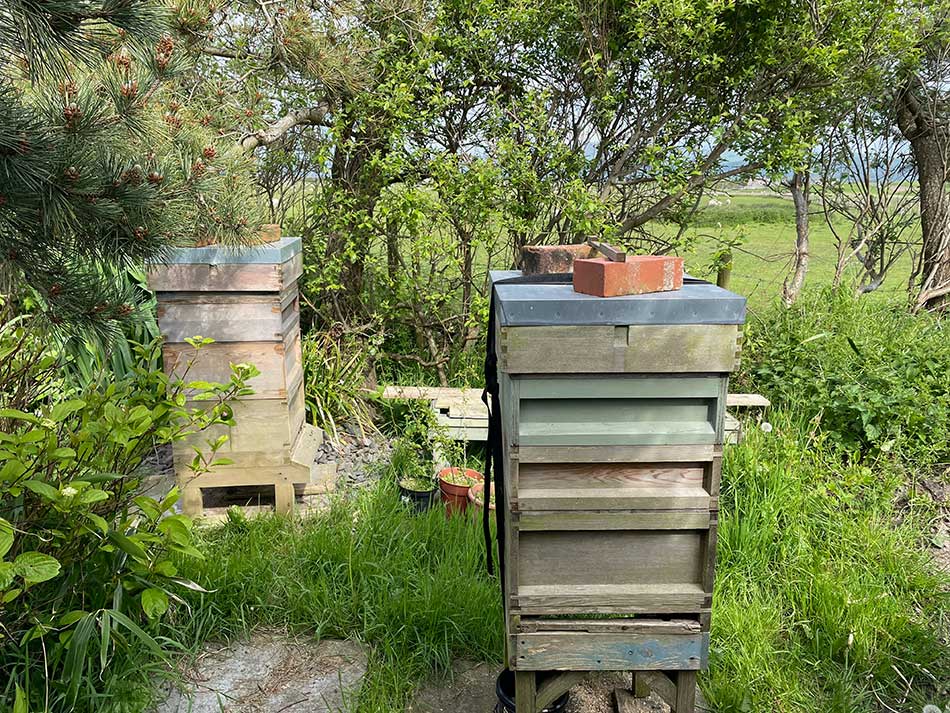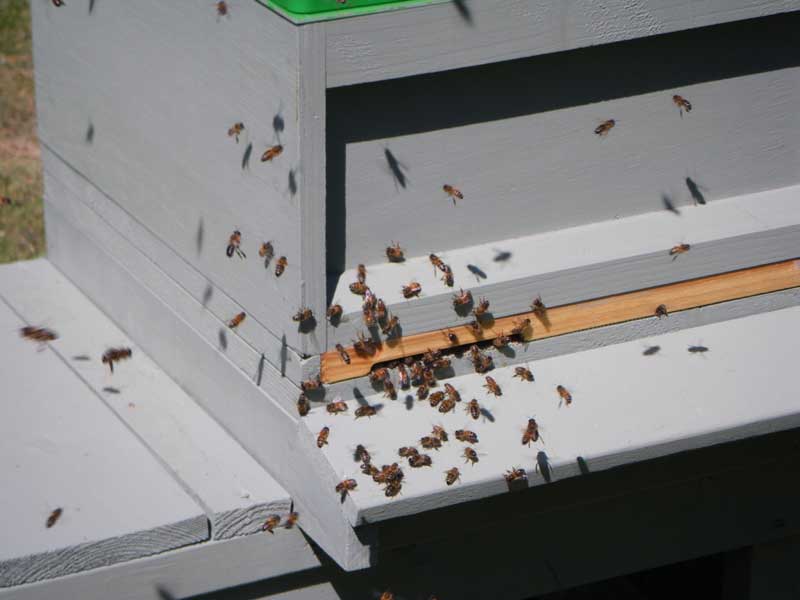Bee-ing Prepared
It was something of a mixed bag over the winter for our bees. One colony that was huge in the autumn died off whilst the colony that had taken up residence in the hive near the bedroom window did quite well. This colony had continued to expand throughout the Spring and was now looking quite large. It even had three supers of honey on it. The bottom two of these were capped but we couldn’t harvest from them as they will contain honey made from both autumn and spring feed that we gave them. Things looked good for this colony though so my plan was to ‘make increase’ from it this year.
Catching them just before they swarm is always difficult though and traditional artificial swarming has been met with limited success in previous years. Usually, the original queen continues to swarm anyway and the new queen doesn’t manage to mate properly. Even if she does she often swarms again later in the year. Anna and I are likely to be away in prime swarming season too. So, I thought I’d try to be one step ahead this year and force a ‘swarm’ with some pre-emptive manipulations.
The colony was expanding well and on my last inspection, there were lots of drone cells. Time, therefore, to split them before they started thinking about swarming. Typically, it took me ages to find the queen! I did find her eventually and essentially used her to create a nuc. I put her and the frame that she was one back into the hive she was in originally, but moved all of the other frames to a hive in the apiary at the bottom of the garden.
The hope is that the flying bees will return to the original hive with the original queen in it. They will feel as though they have swarmed and should be kept busy drawing out fresh comb and tending to the eggs and larvae that the queen is continuing to lay. Hopefully, the fact that they are a much-reduced colony will mean they won’t have the urge to swarm – at least for now.
The half that is now in a hive in the apiary will be queenless and should therefore build some emergency queen cells. The hope is that they will raise a new queen, she’ll head out and mate and then start laying so a new colony will have been created.
Ideally, I would look at this colony after a week, and destroy all but one of the queen cells. The bees in this colony won’t then be able to create any new queen cells as there won’t be any eggs left to do so. They’ll put all their energy into the single queen cell that is left and hopefully, there won’t be any cast swarms coming from it once she hatches.
First Steps
I couldn’t inspect it 7 days after doing the manipulations as we would be away so I left it as long as I could and checked in on them 6 days after the split. Sure enough, there were loads of emergency queen cells. None were sealed yet but I destroyed all but one of them and have now left them to it. I’ll leave them at least 3 weeks before inspecting them again so as to give the queen time to hatch, go on a mating flight and maybe start laying. If I see the bees taking pollen into the hive I’ll do an inspection but I might leave it up to 5-6 weeks before inspecting if I don’t see such activity. Best not to disturb the virgin queen until she’s properly settled and laying well.
I’ll continue to inspect the original hive with the old queen in it weekly though as I’m not convinced she won’t still want to swarm. I guess if she does I’ll have to make another split with the option of creating a third colony, or more likely merging them back together later in the year.
As usual, I’m sure the bees will take us on a journey of their own desire and none of this will work out how we envisage! At least I feel as though I’ve been prepared and there is a chance that it will work.
Wildlife
Elsewhere in the garden, the wildlife is teeming.
There are bumblebees, Wasps, Hoverflies and beetles everywhere. Caterpillars are crawling over and munching everything and the birds are loving it. There’s even life in the new pond in the form of various larvae, loads of mosquito larvae and some predatory diving beetles. The honey bees are enjoying the pond too and can always be seen lining up along the beach to sip at it’s water. The birds have been bathing in the pond and the water feature too. The various bugs and beasties may eat the plants and flowers a little but I can live with that.




















